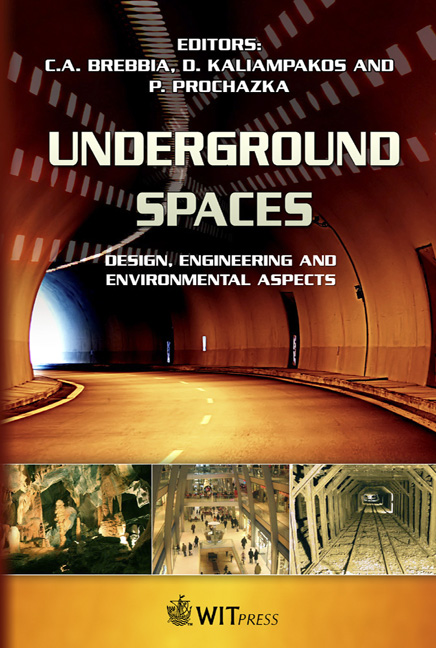Tunnel Face Stability As A Function Of The Purchase Length
Price
Free (open access)
Transaction
Volume
102
Pages
9
Page Range
81 - 89
Published
2008
Size
675 kb
Paper DOI
10.2495/US080091
Copyright
WIT Press
Author(s)
J. Trckova, P. P. Procházka & S. Peskova
Abstract
In geomechanical engineering the stability of the tunnel face appears to be one of the most decisive items in the list of assessments needed for verification of bearing capacity of the system tunnel – surrounding rock. Studies following from on site measurements are very expensive and depend strictly on the nature of material being involved in the study. Experiments conducted on scale models in stands which are filled by physically equivalent materials are more promising and complex, as instrumentation of smaller samples is richer and more flexible than in the case of treatment on real site. Moreover, numerical modeling, which requires a particular description of material behavior of the structures coming into the computational models, can be derived from physical models in an easier way than from real tunnel behavior. A numerical approach is proposed in such a way that internal parameters of a mathematical physically nonlinear model are evaluated using partial results of experimental scale models from equivalent materials. Although basically strongly nonlinear problems are solved, solution of linear algebraic equations is the final step of the approach for identification of values of internal parameters characterizing material properties in mathematical simulation of reality. Tunnel face stability in dependence of a length of work-out space is solved in this paper using coupled modeling, as an example of application of the procedure envisaged. Keywords: fiber reinforced concrete lining, tunnels, coupled modeling, eigenparameters, effect of tunnel lining stiffness.
Keywords
fiber reinforced concrete lining, tunnels, coupled modeling, eigenparameters, effect of tunnel lining stiffness.





